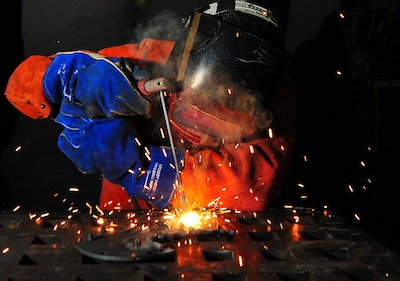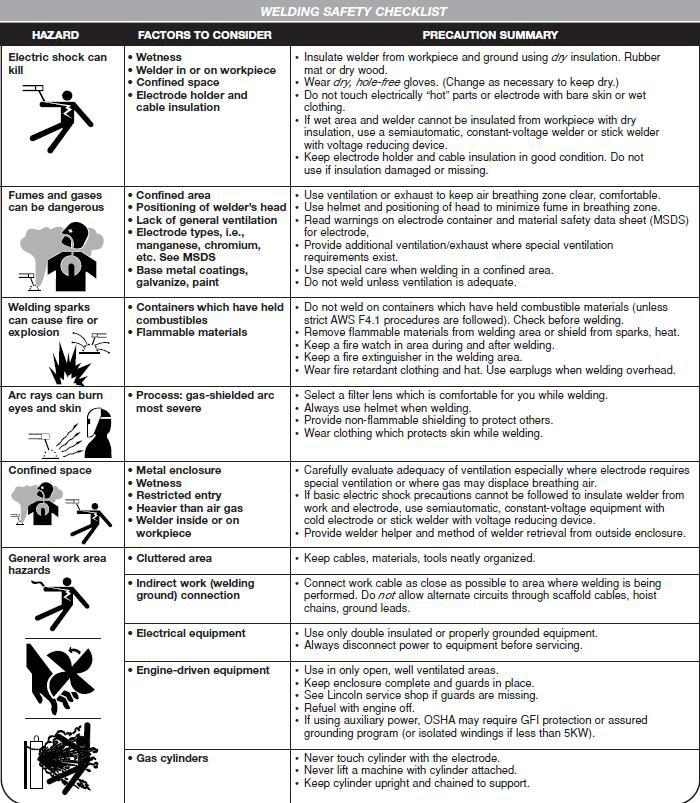
Weld purging is a critical component to ensuring a quality weld, especially when working with stainless steel. Weld purging is a process where oxygen is evacuated from a pipe, tank, or chamber using a noble gas such as argon or nitrogen. This process prevents oxygen from entering the weld pool, which can cause poor quality and loss of corrosion resistance. Weld purging appears to be a low risk process due to the lack of moving parts, flammable gases, and electricity. Welders and supervisors often overlook the inherent dangers involved and become complacent regarding the implementation and enforcement of safety precautions. We’ve put together 5 tips to stay safe through the entire purging process.
Argon and nitrogen are colorless, odorless, tasteless, and non-irritating, making them impossible to detect without proper equipment. These gases are simple asphyxiants and exposure to them can lead to loss of consciousness within 1 minute. Permanent brain damage can occur past 3 minutes, death can occur past 5. Once a person is deprived of oxygen for 10 minutes or more, a full recovery becomes essentially impossible and survival unlikely. This danger becomes heightened in enclosed spaces such as pipes and tanks. Identify which gas or gases may be present based on the work being done, as every gas has unique properties. Argon is heavier than air, and will tend to settle near the bottom; meanwhile, nitrogen is slightly lighter than air and will settle near the top. Both gases can form pockets if they are not properly ventilated and can be missed during atmospheric testing. If these pockets are displaced or disturbed by the movement of a worker they can quickly become a threat to anyone inside.
It is important to be aware of these dangers when using any products that require noble gas. Under no circumstance should a worker enter a pipe or tank while a purge is in process. In the event that a worker enters a vessel that is being purged, only trained rescue personnel wearing respirators should enter. OSHA statistics indicate that many argon and nitrogen gas deaths happen in two’s; after one worker falls victim a second often enters to rescue their coworker and dies as well.
Most purging operations would fit under the definition of a confined space. According to OSHA, permit-required confined spaces are areas large enough for workers to enter but are not necessarily designed for people and have limited means of entry and exit; these spaces are not designed for continuous occupancy. Additionally, areas that may contain a hazardous atmosphere are considered confined spaces.
These inspections should include all essential gear: gas flow regulators, gas hose lines, purge dams or purge bladders, and atmospheric testing equipment. There are some key issues that should be looked for in each piece of equipment.
Gas flow regulators: Check for cracks or frozen flow meters. A broken regulator can lead to excessive amounts of argon or nitrogen gas being used. A stable purge chamber can only exist with a controlled flow of gas. A high flow rate can cause turbulence in the vessel. Turbulence will force argon and oxygen to move in and out of the vessel and create an unstable environment.
Gas hose lines: Holes and tears in gas hosing means that gas will be leaking out in the work area instead of flowing into the purge chamber. Damaged hoses will result in the use of more gas than necessary and longer purge times. Not only is this expensive, it will mean a potentially harmful buildup of argon or nitrogen within the work area.
Purge dams/purge bladders: This equipment should be checked for tears and punctures. A stable purge environment will be impossible to achieve with a damaged bladder or dam. It is important to read the use and care instructions as each piece of equipment is unique and will be damaged by improper use; additionally, most dams and bladders require a specific and controlled flow of gas to function properly.
Atmospheric testing equipment: This gear must be checked for proper calibration as recommended by the manufacturer. Each monitor should have a dated certificate of calibration that includes the date for when the monitor is due for inspection and recalibration.
Damaged or malfunctioning equipment will place workers in harm’s way. A buildup of argon or nitrogen gas in the workspace or improper testing of a confined space for atmospheric hazards can have deadly consequences. It is imperative that any damages discovered during the inspection process be repaired; if repairing the damage is impossible then the equipment must be replaced before work can begin.
OSHA provides some basic best practices that should be followed across all industries.
There are some additional hazards that may be encountered during shutdown maintenance. Pipes and tanks that have already had product such as oil or gas in them can still contain toxic or explosive fumes. Any sections that need to be replaced should be cold cut to avoid igniting the fumes inside. After cutting out the portion for replacement, the space inside should be ventilated. It is important to note that even while being ventilated, more fumes can still flow to the work space from other areas along the pipeline. The extreme heat and sparks from welding will ignite these fumes if they are still present when work begins. One way this can be avoided is by using a purge dam or bladder on either side of the cut pipe and purging beyond the welding area with argon or nitrogen gas. The argon will push the explosive fumes away from the work site and make it safe to weld. Any gear or equipment that has an open flame or can cause extreme heat should be kept away from the work site while cold cutting and purging is in process.
This process of purging the fumes away will only work if the interior surface of the pipe has been completely cleaned. Product residue will remain along the inner walls of pipes and tanks during maintenance. This residue will make it impossible for a dam or bladder to make a complete seal, which will allow fumes to seep through to the weld area. The atmosphere around the work site should be tested for explosive and flammable fumes before any welding is done.
Proper planning and enforcement of simple best practices, and education on the lethal dangers of weld purging, result in a much safer work environment and help to reduce tragic accidents including loss of life. These 5 tips provide some basic guidelines to help prepare welders for what to expect when purging and entering confined spaces.

© 2025 Aquasol Corporation. All Right Reserved.
